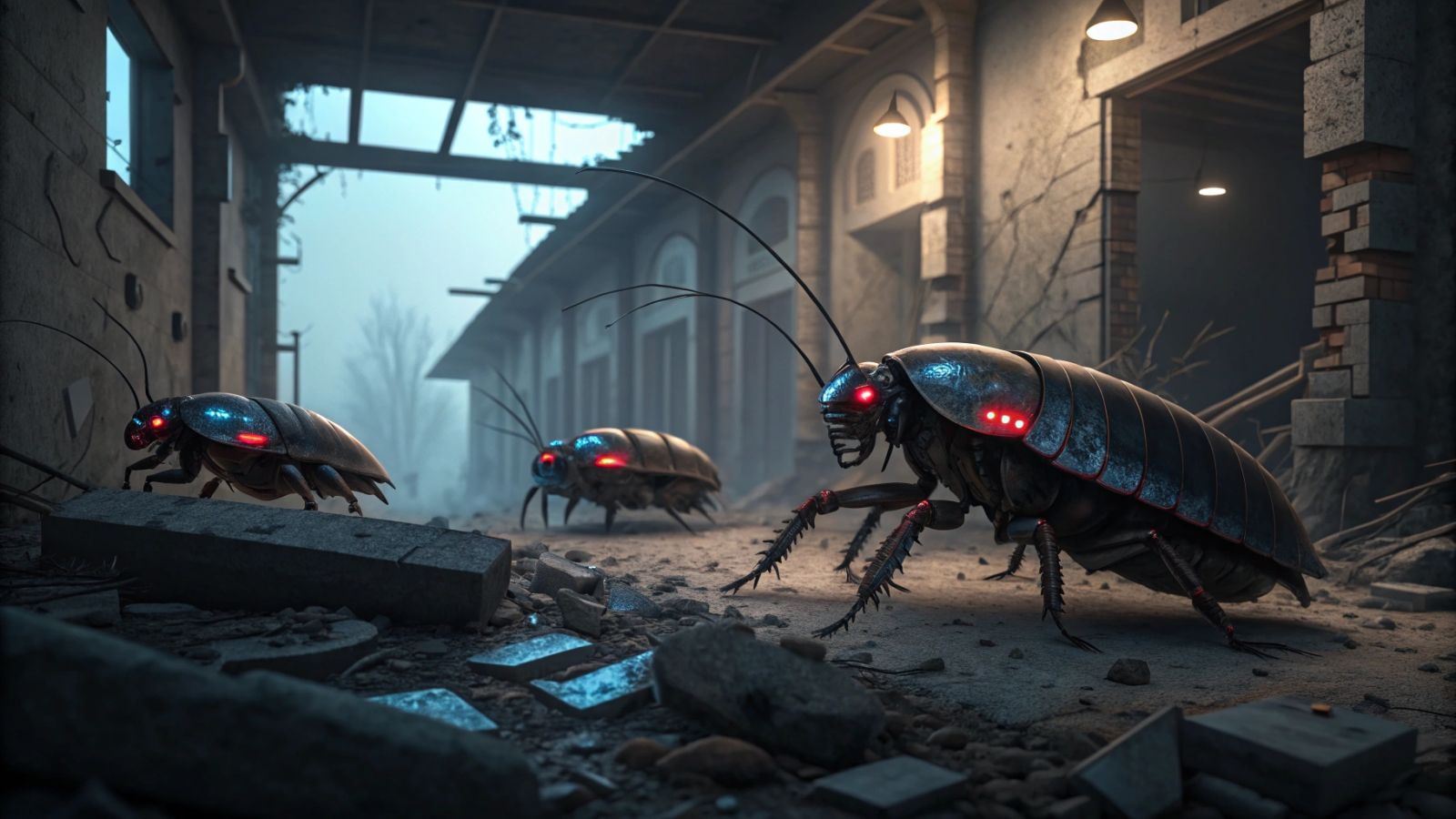Swarms of cyborg cockroaches: a robotic future in the making 🐛
Published by Cédric,
Article author: Cédric DEPOND
Source: Nature Communications
Other Languages: FR, DE, ES, PT
Article author: Cédric DEPOND
Source: Nature Communications
Other Languages: FR, DE, ES, PT
Follow us on Google News (click on ☆)

This breakthrough, the result of an international collaboration, relies on an algorithm that coordinates the movements of insects fitted with technological "backpacks." These devices, composed of cameras, batteries, and antennas, allow the insects to be guided remotely while leveraging their natural abilities to navigate complex environments.
A technology inspired by nature
Cyborg insects are not traditional robots. They combine living organisms with miniaturized electronic components. This biohybrid approach offers an energy-efficient alternative to conventional robots, which are often limited by their energy consumption and inability to squeeze into tight spaces.
Researchers chose Madagascar hissing cockroaches for their robust locomotion capabilities. These insects, equipped with sensors and communication systems, can be directed toward specific targets, such as survivors trapped under rubble.
An algorithm to guide the swarm
The developed algorithm operates on the "leader-follower" principle. A leader insect is designated to guide the group, while the others follow its instructions while adapting their movements to encountered obstacles. This method reduces the need for electrical stimulation by half, thereby extending the cyborgs' autonomy.

a) Cyborg insect: Gromphadorhina portentosa equipped with an electronic board featuring a control system and wireless communication module, powered by a rechargeable LiPo battery.
b) Illustration of cyborg swarm navigation: decentralized algorithm guiding the swarm through a sandy area with hills and obstacles, without prior information.
c) Side view of the cyborg swarm.
d) Rear view of the cyborg swarm.
In the lab, this technology enabled a swarm of cockroaches to navigate effectively in a complex environment. The insects demonstrated an ability to assist each other, freeing those that were stuck or overturned, a crucial feature for rescue missions.
Promising applications
Cyborg insect swarms could be deployed in disaster zones, such as after an earthquake, to quickly locate survivors. Their sensors can detect signs of life and transmit this information in real time to rescue teams.
Beyond rescue operations, this technology could be used to inspect damaged infrastructure or monitor hard-to-reach environments. Researchers are also considering applications in precision agriculture or space exploration.
Challenges to overcome
While the lab results are promising, real-world testing is needed to validate the effectiveness of this technology. Researchers plan to conduct experiments in outdoor settings, particularly in rubble zones, to assess the algorithm's robustness.
The team is also working to make the system more autonomous by integrating onboard sensors that would allow the cyborg insects to function without relying on external tracking systems.
A fruitful international collaboration
This project is the result of a collaboration between Japanese and Singaporean universities. Researchers emphasize the importance of interdisciplinary research to tackle such complex problems.
This innovation opens new perspectives for the use of biohybrid systems in critical missions where speed and efficiency are essential.